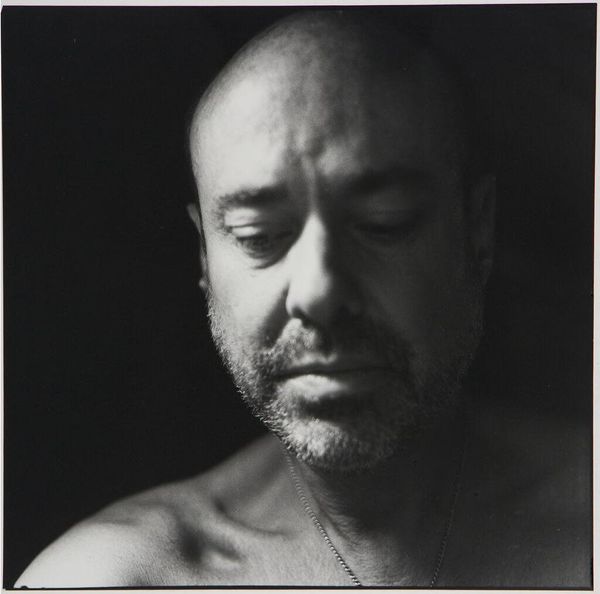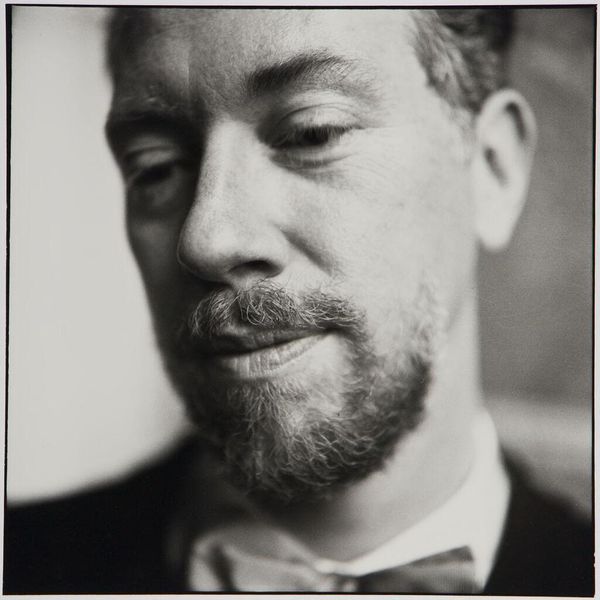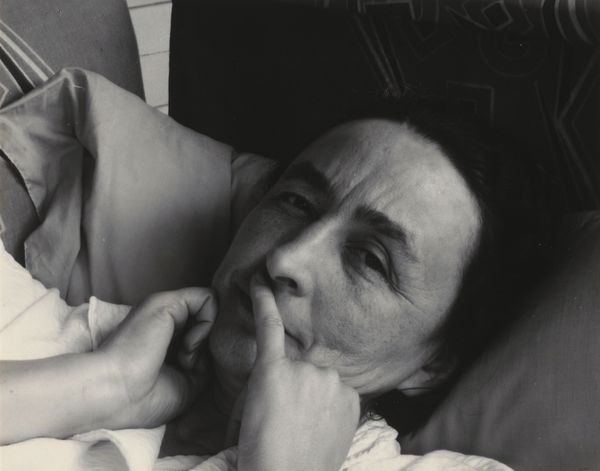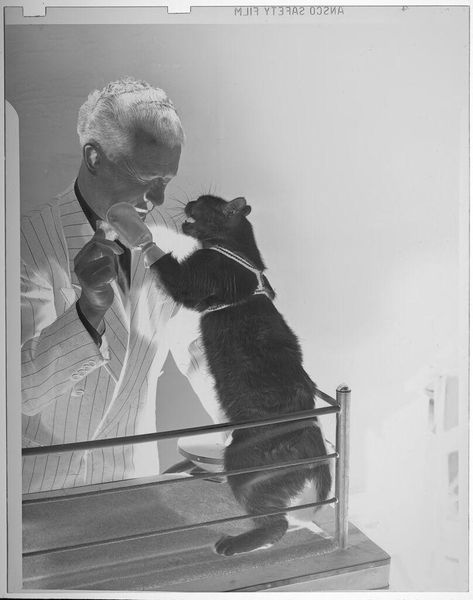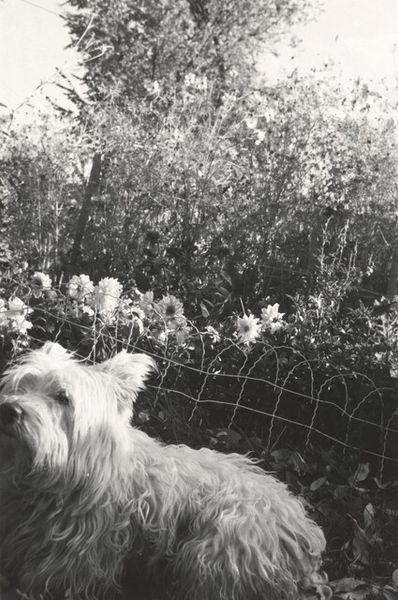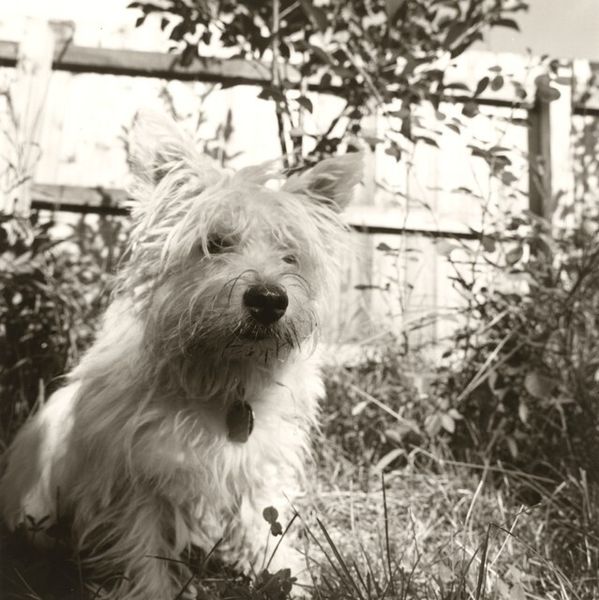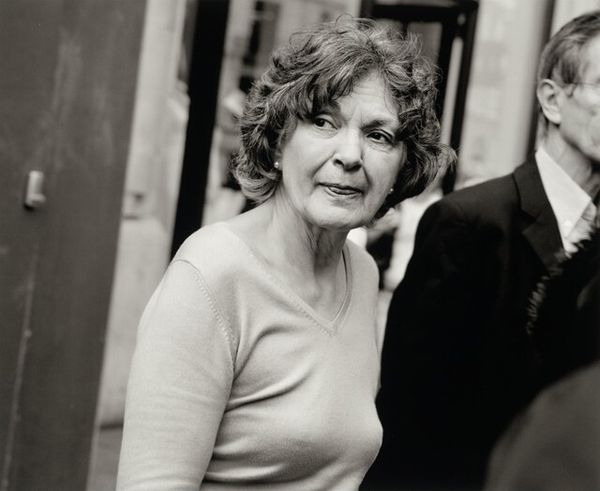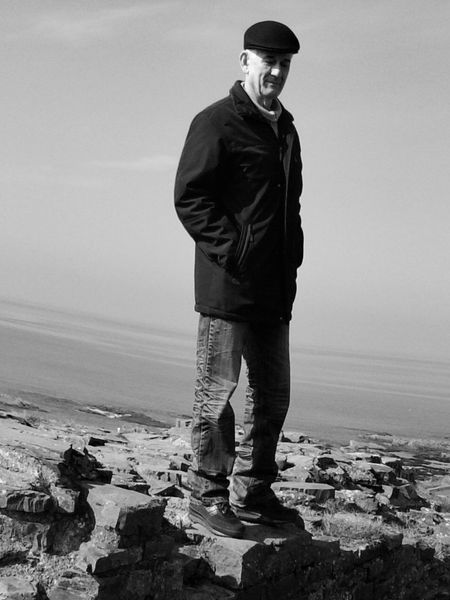
#
black and white photography
#
profile picture
#
low key portrait
#
portrait image
#
portrait
#
portrait subject
#
black and white format
#
black and white
#
single portrait
#
monochrome photography
Dimensions: image: 30.5 × 45.7 cm (12 × 18 in.) sheet: 40.3 × 50.8 cm (15 7/8 × 20 in.)
Copyright: National Gallery of Art: CC0 1.0
Curator: This black and white photograph from 1993 is titled "Dewain Belgard" and the work of Nancy Andrews. It features a close portrait of a man, eyes closed in obvious delight as a dog affectionately licks his forehead. What strikes you first about this work? Editor: I'm immediately drawn to the tenderness radiating from this image. The contrast of the textured leather jacket against the soft fur, the tight composition—it’s intimate and almost universally relatable in its depiction of human-animal connection. Curator: Indeed, the imagery here operates on multiple levels. Consider the dog itself. It’s not merely a pet; across cultures, dogs often symbolize loyalty, protection, and unconditional love. Its presence transforms this portrait from a study of an individual into a broader statement about companionship and interspecies bonds. Editor: I agree. It reminds me of the historical tradition of depicting animals alongside important figures in art, not just as accessories, but as signifiers of virtue or status. In this context, the dog elevates the sitter. I'm curious, however, about the choice of black and white. It certainly steers clear of sentimentality in its focus on shape and light, yet one cannot help but wonder why color was removed from the equation here? Curator: The use of monochrome removes distraction. By stripping away the colors, we focus squarely on the emotive exchange, the palpable joy, the interplay of light and shadow upon their faces, the textures. Andrews guides us towards understanding the essence of affection stripped down to its primal form. It universalizes the feeling by removing specifics of time and place through de-saturation. Editor: Fascinating. Thinking about contemporary portraiture, this image prompts me to reflect on how we publicly portray relationships, particularly in our hyper-mediated society. How do representations like these influence public perception of such intimate moments? Is there almost an archetypal simplicity conveyed, amplified even through its contrast of light and dark that might resonate universally with an audience, regardless of background? Curator: Precisely! It also serves as an interesting cultural artifact. We get insight into the evolving aesthetics of how relationships are framed and projected. So what are your concluding impressions? Editor: Ultimately, beyond a personal moment, the photograph’s power lies in capturing an honest depiction of connection—between species, between individuals and perhaps prompting introspection for viewers about relationships. Curator: An exploration of love and loyalty—rendered timeless through the conscious selection of light, texture, and symbolism.
Comments
No comments
Be the first to comment and join the conversation on the ultimate creative platform.

